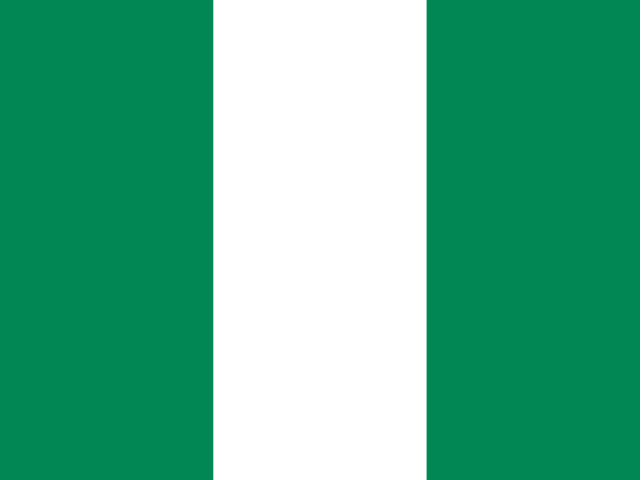
Nigeria
*Survey sample primarily comprised of English speakers
Nigerian news creators are a mix of independent creators and activists and prominent hosts from TV and radio. Public and private national broadcasters remain key sources of information for most Nigerians, but in some cases influencers and citizen journalists are now breaking stories ahead of mainstream media. Many news creators are young and focus on holding the government to account over issues such as corruption.
X (formerly Twitter) remains a particularly important channel for news in Nigeria along with Instagram and TikTok. YouTube plays a smaller role than many other markets in this report and TikTok one of the largest. Across networks, the number of followers for the top influencers is lower than you might expect for such a populous country. This partly reflects low internet penetration outside major cities and high data charges. The contents of our list may also be affected by our English-speaking and mostly urban survey sample.
At the top of the list and by far the most mentioned news creator in Nigeria is VeryDarkMan (VDM), the online persona of Martins Vincent Otse. VDM is an outspoken influencer and activist who is on a mission to fight against injustice. His posts often show him leading protests, for example in seeking justice for the victims of a massacre, or supporting teachers demanding the minimum wage. His outspoken videos have led him to be arrested on several occasions.
Another prominent social activist is Aisha Yesufu, the co-founder of the #bringbackourgirls movement, which brought attention to the abduction of 200 young girls by the terrorist group Boko Haram. She also campaigns against police brutality and has millions of followers across X, Facebook, and YouTube.
Beyond politics, other creators are known for posting entertainment and celebrity news, mainly on Instagram. Linda Ikeji is one of Africa’s best-known bloggers, who runs multiple accounts dealing with news, entertainment, and music. Instalog9ja, GossipMillTV, and Gistlover are other popular accounts. Afro-beat star Davido is one of Africa’s most followed celebrities (30m followers on Instagram alone). He uses that influence for charitable purposes, such as raising money for orphanages in Nigeria. His posts frequently influence Nigerian fashion, language, and even politics.
Other notable creators include Dan Bello, who is best known for producing comic skits and political satire in the Hausa language, and Abis Fulani, who uses his TikTok account (3.9m followers) to educate audiences on topics such as mathematics and is actively involved in promoting Hausa traditions and youth empowerment.
Aproko Doctor (Egemba Chinonso Fideli) is a Nigerian medical doctor turned online educator. He has over 2m followers on both TikTok and Instagram and uses his feeds to provide health tips, debunk medical misinformation, and publicise health-related news.
Proportion that regularly pay attention to creators/influencers in social and video networks
61%
(1/24)
Proportion that regularly pay attention to news brands/journalists in social and video networks
43%
(2/24)
Gender balance
13
of the top 15 are men
These lists represent the individuals most mentioned by respondents to our 2025 and 2024 Digital News Report surveys in the context of news and social media and video networks. Respondents who used Facebook, YouTube, X, Instagram, Snapchat or TikTok for news were asked where they paid most attention – including options for traditional news media/journalists, digital-first news outlets not associated with traditional media, creators/personalities who mostly focus on the news, creators/personalities who occasionally focus on the news. For each type, we asked respondents to name up to three examples of who they paid attention to. We then counted the individuals mostly using a tool called OpenRefine to help us use a semi-automated approach to clean the data (e.g. resolve misspellings or alternative names, remove duplicates etc.). In parallel, we also used ChatGPT5 to process and recode the original data, and to identify the most mentioned individuals to give us a way of comparing results. Further details on the tools we used and on small differences in methodology between 2024 and 2025 are provided in our methodology section.
Why did you use open fields rather than closed lists to collect the data?
We used open text response boxes, first, because in many countries the most popular news creators and influencers have not yet been identified by previous research. Second, because it would likely not be possible to fully capture the broad and fragmented nature of this ecosystem using a fixed listed of response options. And third, because we wanted to adopt an audience-centric approach whereby respondents could enter names that they considered news sources to them, even if they did not meet accepted standards or definitions within academia or the journalistic profession. This means that many of the names we list here would perhaps have been excluded under a more top-down approach.
How definitive is the order of the named individuals in each country?
In some cases, especially near the bottom the list, differences in the number of mentions for individuals are very small. Given our survey methodology, and the associated margin of error, the precise rank order should be read as indicative rather than definitive. Many other individuals were mentioned by respondents in the context of news, even if they do not make the top 15 using our approach. The lists should therefore be seen as indicative of some of the top news individuals in each country.
Why are some popular individuals with high follower counts lower down the list than individuals with high follower counts?
There are a number of possible reasons for this. First, some popular creators such as musicians and comedians are known more for entertainment than for news and their follower counts are often higher as a result. This means that even if they do occasionally talk about news related issues, not all of their followers will be aware of it. Second, some individuals working for traditional media may have relatively low personal followings but are widely distributed via social accounts of news brands. Third, there is a margin of error in surveys such as this (see previous answer) that needs to be borne in mind.
Did you exclude any individuals or other entries as part of the process?
Our lists are inclusive in terms of being faithful to the individual names mentioned by respondents. We removed just a handful of actors, sports stars, and celebrities if we were sure they did not post on any news-related issues. In most cases this did not affect the top 15 names that are published in this report for each country.
Many creators operate as part of collectives or use pseudonyms. How did you deal with these categorisation issues?
In terms of creator collectives or social-first brands, such as the Daily Wire (US) or TLDR News (UK) we followed the lead of our respondents. Where audiences have identified them as individuals, we have tended to categorise these as creators rather than news brands, but where they have mentioned a brand, we included them in our list of news brands. Where it was clear, however, that the brand is the work of one individual (e.g. Es.decirdiario/Sheila Hernández in Spain) we categorised them as an individual and made the connection clear in the description. Many creators use pseudonyms and, in these cases, we combined mentions of these with the real names. Again, we tried to make the connection clear in the description.
How did you deal with politicians and the overlap between politicians and political commentary?
Politicians and businesspeople are also frequently mentioned by survey respondents in the context of news sources on social media, and often have significant followings (e.g. on X, Donald Trump has 109m, Narendra Modi 109m, and Elon Musk 225m). Many politicians are also content creators and commentators who shape public debates. Some content creators have become politicians, and vice versa. We chose to include politicians if they were named by respondents in the context of news, but we have also shaded serving (or recently serving) politicians in grey to make clear the different relationship they often have with news consumers.

